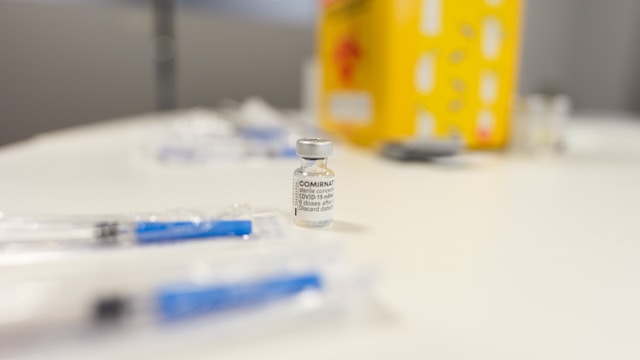Your cart is currently empty!

Why August Is National Immunization Awareness Month? (and What You Should Know)
August is more than just the final stretch of summer. It’s also National Immunization Awareness Month (NIAM). And as families prepare for back-to-school season, it’s the perfect time to check in on one of the most effective ways to protect your health: vaccines.
Whether you’re getting ready for a pediatric checkup, reviewing school forms, or just wondering if you’re due for a booster, this month is all about raising awareness and helping people of all ages stay up to date on routine immunizations. In this post, we’ll break down what NIAM is, why vaccines matter, and how to take simple steps to protect yourself and the people around you.
What Is National Immunization Awareness Month?
National Immunization Awareness Month (NIAM) is observed every August in the United States. It’s a nationwide campaign to remind individuals, families, and communities about the importance of routine vaccinations across every stage of life. From infancy to adulthood.
NIAM is supported by the Centers for Disease Control and Prevention (CDC) and many public health organizations. During the month, healthcare providers, schools, and community groups highlight vaccine education, encourage checkups, and promote timely immunizations. Especially ahead of the new school year.
The goal isn’t just to check boxes on a health form. It’s to help everyone understand how vaccines protect our health, our loved ones, and our most vulnerable neighbors.
Why Vaccines Matter
Vaccines are one of the most powerful tools we have for preventing serious illnesses. And not just for ourselves, but for the people around us. They help protect against vaccine-preventable diseases like:
- Measles
- Whooping cough (pertussis)
- Polio
- HPV-related cancers
- Influenza (the flu)
- COVID-19
By keeping our vaccines up to date, we reduce the risk of spreading contagious diseases, especially to people who can’t be vaccinated, like newborns, cancer patients, or those with weakened immune systems.
This is what’s often called herd immunity or community protection: when enough people are vaccinated, it helps shield those who are most at risk.
Vaccines don’t just prevent illness. They reduce complications, hospitalizations, and long-term health effects. And in many cases, they save lives.

Common Immunizations by Age Group
Vaccination needs change as we grow. From infancy to older adulthood, staying up to date on recommended immunizations helps protect against preventable diseases at every stage of life.
Here’s a quick overview:
Children (Ages 0–12)
- MMR (measles, mumps, rubella)
- DTaP (diphtheria, tetanus, pertussis)
- Polio (IPV)
- Hib (Haemophilus influenzae type B)
- Varicella (chickenpox)
- Hepatitis A & B
- Pneumococcal and rotavirus for infants
Teens (Ages 13–18)
- Tdap booster (around age 11–12)
- HPV vaccine (to protect against certain cancers)
- Meningococcal vaccines (often required for college)
- Annual flu shot
Adults (19–64)
- Regular flu shot
- Tdap or Td booster every 10 years
- HPV (if not fully vaccinated earlier)
- COVID-19 vaccines and boosters as recommended
- MMR and varicella if not previously immune
Older Adults (65+)
- Annual flu shot
- Shingles vaccine (Shingrix)
- Pneumococcal vaccine
- COVID-19 and other recommended boosters
💡 Tip: Not sure what you’ve had? Ask your healthcare provider to review your vaccine history or look it up in your state’s immunization registry.

Vaccines and Back-to-School Prep
Back-to-school season isn’t just about new backpacks and sharpened pencils. It’s also a key time to make sure kids and teens are up to date on their vaccinations.
Most schools and colleges require proof of immunization before students can attend in person. These requirements help keep classrooms and campuses safe from outbreaks of vaccine-preventable illnesses.
Here’s how to stay on top of it:
- Book a pediatric checkup or physical before school starts—this is often when boosters are given
- Check your local or school district’s immunization requirements
- Don’t forget teens. They may need updated meningitis or HPV vaccines before entering high school or college
- Bring your child’s vaccine record to appointments so the provider can update anything that’s missing
- If your family is behind on vaccines, don’t stress. Your doctor can help you create a catch-up plan
Staying current on immunizations before the school year starts is one of the easiest ways to protect your child’s health, and the health of their entire school community.
How to Stay Informed and Take Action
Understanding the importance of vaccines is the first step. Knowing what to do next is just as important. Thankfully, staying informed and up to date is easier than you might think.
Here’s how to take action:
- Ask your healthcare provider to review your (or your child’s) immunization record
- Schedule a wellness visit if you’re unsure about what vaccines are due
- Use reliable sources like the CDC, Health Canada, or your local health department to get trustworthy information
- Keep a copy of your vaccine records, digital or paper, for school, travel, or work
- Talk openly with friends and family about the value of staying up to date, especially if they care for young children or older adults
Vaccines aren’t just for kids. They’re part of lifelong preventive care. A quick check-in now could help prevent serious illness later.
Vaccines are one of the simplest and most effective ways to protect your health, and the health of the people you love. National Immunization Awareness Month is a reminder that prevention matters, and staying up to date doesn’t have to be complicated.
Sign up for the Healthy American newsletter for seasonal health checklists, vaccine awareness tips, and trusted wellness advice delivered straight to your inbox.
Small steps make a big difference. Let’s take them together.

Leave a Reply